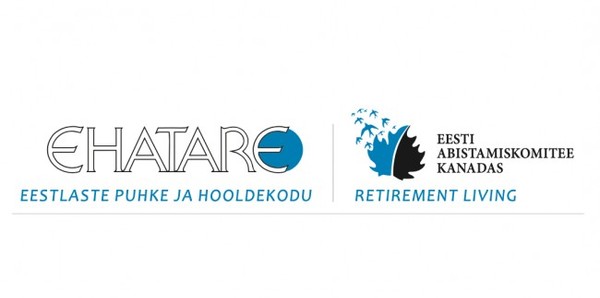Prepared at the request of the Cooperation Assembly of Democratic National Organisations of Estonia by Aadu Oll, Soviet prisoner Z-2-837
Translation and reading list by Mari-Ann Kelam...........

Lisame foto " Women in International Security Conference " , Riga, May 15-17, kus Mari-Ann Kelam oli üks peakõnelejatest. Fotol on " vanad kolleegid USA-st" kellest M-A.Kelami raamatus ka juttu: Ojars Kalnins Läti Instituudi Direktor ja endine Läti Suursaadik USA-s, Rozanne Ridgway American Baltic Enterprise Fund Director ja endine Assistant Secretary of State for European Affairs, Mari-Ann Kelam , endine Riigikogu liige ja endine ERKÜ aseesimees.
Whom do we remember and mourn on this day? And why on June 14?
On this day we honor all the people who perished as a result of Communist
terror in Estonia. We commemorate this day because it was precisely on June
14, 1941 that the first mass deportations took place in the Soviet-occupied
Baltic States, Western Belarus, Western Ukraine and Moldova.
During the Soviet occupation, which began when the Red Army invaded Estonia
in 1940, over 125,000 people perished. More than one eighth of the total
pre-Second World War Estonian population of one million was killed or died
as a result of Soviet repressions.
>From the first days of the occupation until Stalin’s death Estonians were
imprisoned in great numbers. About 70,000 men and women were arrested.
Some were summarily executed, most died in slave labor camps as a result of
the inhumane conditions there. Their graves are scattered over a vast
area - in the permafrost of the far north, in the Ural Mountains, in the
Siberian taiga, in the Central Asian steppes and deserts. Arrests of
individuals, at a somewhat reduced rate, continued after Stalin’s death.
In addition to individual arrests, five waves of mass deportations crossed
over Estonia. As a result, about 35,000 people were shipped to remote and
undeveloped areas of the Soviet Union. Few ever returned to their homeland.
About 10,000 unmarked graves are in the Estonian forests and marshes. There
rest men and women who lost their lives fighting the hopeless but determined
partisan war against the occupiers after World War II had ended. Communist
security forces reported shooting the last of the “Forest Brothers” in 1978.
About 7,000 boat refugees found their final resting place beneath the waves
of the Baltic Sea after undertaking this dangerous method to try to escape
from Communist terror.
The mass deportations stand out because the people ? mostly women, children
and the elderly ? were punished not for what they had done, but for who they
were.
Deported in 1941 were the Estonian intelligentsia and community leaders -
10,000 people who were founders of the Estonian Republic, politicians,
educators, clerics, government workers, and the well to do, mostly along
with their families. Also deported were the wealthier Jewish Estonians and
Russian Estonians suspected of White Guard sympathies.
Deported in 1945 were all people of German background who had remained in
Estonia.
Deported in 1949 were over 20,000 people, mainly farmers, in order to cut
off the source of supply to the Forest Brothers as well as to smash
resistance to forced collectivization of farms. Also targeted were the
remaining families of men who had been arrested earlier. The original plans
in 1949 had called for deporting 30,000 people, but almost ten thousand of
these were able to flee and hide.
In 1950 a “small follow-up deportation” took place.
Deported in 1951 were the Jehovah’s Witnesses.
How were the deportations carried out?
According to the overall plan issued from Moscow, the local Communist Party
Central Committee established the number of families to be deported from
each region with a certain reserve (in order to assure fulfillment of the
plan in case some people on the original list succeeded in fleeing).
The security apparatus, with the help of local collaborators, drew up the
lists. These were then approved in the party committees. Cattle cars, now
meant for hauling human beings, were brought to the train stations.
Deportation details, headed by a security officer, carried out the process
of removing people from their homes and loading them into the cattle cars.
The deportation detail’s assistant-guide was a local Communist or activist,
and two to four Red Army soldiers provided armed security. In addition
there were a few local Communists who stayed behind to inventory the
personal property of those deported. The families were given one to two
hours to pack their belongings. Usually they were permitted to take only as
much as they could carry. The property left behind was commandeered and
sold for a pittance to local Soviet activists or simply stolen.
Estonia is not alone in its mourning.
On the 14th of June Latvia, Lithuania, Moldova, Western Ukraine and Western
Belarus remember their victims as well. The Chechens and other people of the
Northern Caucuses remember their dead on February 23. On that day their
entire populations were deported, just like the Crimean Tatars, the Volga
Germans and others. At Stalin’s order, at least thirteen nationalities were
deported. October 30 marks the “Day of Soviet Political Prisoners Who
Perished” in Russia.
Totalitarian regimes have carried out many unspeakable crimes against
humanity. Nazi crimes have been exposed and condemned. Unfortunately this
cannot be said about the crimes of Communism. The demagogic and insidious
Communist doctrine thrives in some places until this day. The world is not
yet aware of the fact that during the twentieth century, well over 100
million people fell victim to Communism. In China alone there were 65
million victims, in Russia at least 20 million people in the Gulag system
disappeared into eternity. [A. Yakovlev: “60 million killed during the
Soviet years, millions more died of starvation.”] The leaders and
perpetrators have not been found guilty – they can be seen even today as
bronze and granite heroes in the center of many cities in the world.
On June 14, let us remember the victims of Communism worldwide and let us do
everything in our power to see that these horrors never recur.
A few suggestions for further reading on the topics of Communist crimes:
Andrew, Christopher. The Sword and the Shield; The Mitrokhin Archive and the
Secret History of the KGB. Basic Books, 1999. ISBN:0-465-00310-9
Applebaum, Anne. Gulag. Doubleday, 2003.
Conquest, Robert & White, John Manchip.. What to Do When the Russians Come;
A Survivor’s Guide. Stein & Day, 1985.
Courtois, Stéphane, et al. Le Livre Noir du Communisme. Robert Laffont,
1997. ISBN: 2-221-08204-4. [Also available in English (The Black Book of
Communism: Crimes, Terror and Repression. Harvard University Press, 1999)
and other translations]
Kolga, Margus, et al. The Red Book of the Peoples of the Russian Empire.
Tallinn, NGO Red Book, 2001. ISBN:9985-9369-2-2
Radzinsky, Edvard. Stalin. Anchor Books/Doubleday, 1997.
Solzhenitsyn, Aleksandr I. One Day in the Life of Ivan Denisovich.
Solzhenitsyn, Aleksandr I. The Gulag Archipelag: 1918-1956.
Yakovlev, Alexander N. A Century of Violence in Soviet Russia. Yale
University Press, 2002. ISBN: 0-300-08760-8
























